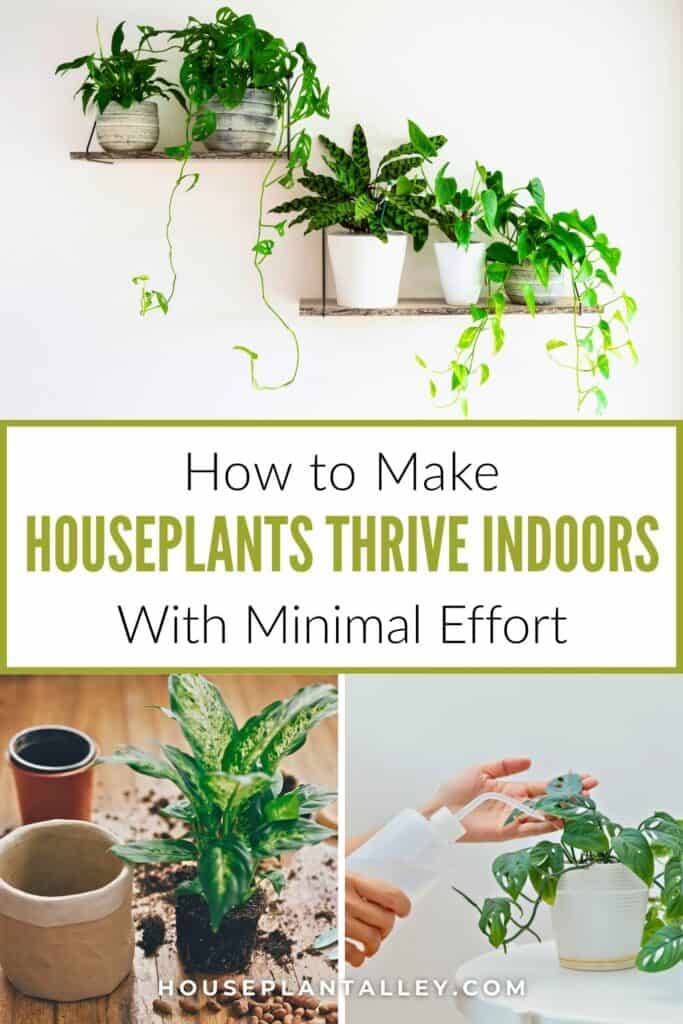Caring for houseplants isn’t nearly as complicated as it seems. According to botanist Dr. Sarah Chen, “The key is establishing consistent routines around light, water, and temperature.” Whether you’re nurturing delicate ferns or sturdy succulents, your plants require specific conditions to flourish. Once you understand these foundational needs and apply proven maintenance strategies, your indoor garden will shift from surviving to thriving.

Contents
Light Requirements for Indoor Plants
Light intensity and duration are crucial to healthy growth. Most houseplants need at least 6 hours of bright, indirect sunlight per day. Watch for signs of low light: small leaves, pale color, leggy stems reaching for windows. Supplement with grow lights if natural light is limited. Rotate plants every few weeks to expose all sides evenly.
Creating a Watering Routine
Watering can be tricky—but it’s easy with consistent checks. Insert a finger 1 inch deep into the soil; if dry, it’s time to water. Water thoroughly until it flows from drainage holes. Never let plants sit in standing water. Adjust watering frequency based on season and plant type. “Most plants need less water in winter when they’re dormant.” — Dr. Sarah Chen
Managing Temperature and Humidity

Maintaining a stable indoor climate is vital. Ideal temperature range: 65–80°F. Preferred humidity levels: 40–60%. Avoid drafty windows and heating vents. Increase humidity with pebble-filled trays, grouping plants together, or using small humidifiers if levels fall below 40%. “Temperature fluctuations can stress your plants considerably.” — Dr. Sarah Chen
Proper Pruning and Maintenance
Pruning supports energy flow and vibrant growth. “Removing dead or yellowing foliage redirects the plant’s energy to new growth.” — Jennifer Martinez, horticulturist. Use clean, sharp tools for strategic cuts. Remove yellow leaves at the base. Trim leggy stems back to growth nodes. For vining plants like pothos, cut just above a leaf node. Clear fallen debris from the soil weekly to deter pests.
Seasonal Growth Patterns
Plants shift with the seasons—your care should too. “Plants naturally slow their growth in winter and surge in spring.” — Dr. Sarah Chen. Winter: Reduce watering by 30–50% and pause fertilizing. Spring: Gradually increase watering and resume monthly fertilizing. Look out for seasonal signs like leaf drop or yellowing—often normal.
Early Pest Detection and Prevention
Routine inspections save plants from serious damage. Inspect weekly for signs like sticky residue, webbing, or tiny insects. Check both sides of leaves using a magnifying glass. Spot pests via unusual spots, holes, or discoloration. Quarantine new plants for 2 weeks before adding them to your collection. “Most houseplant pests are visible to the naked eye once you know what to look for.” — Dr. Sarah Chen
Choosing Containers and Soil
Good containers and soil are the backbone of plant health. Use containers with drainage holes—terracotta and ceramic work well. Container size: 1–2 inches larger than the root ball. Match the soil to your plant’s specific needs. General houseplants: well-draining potting mix with perlite. Succulents: cactus soil for fast drainage. Tropical plants: moisture-retaining mix enriched with peat moss.
